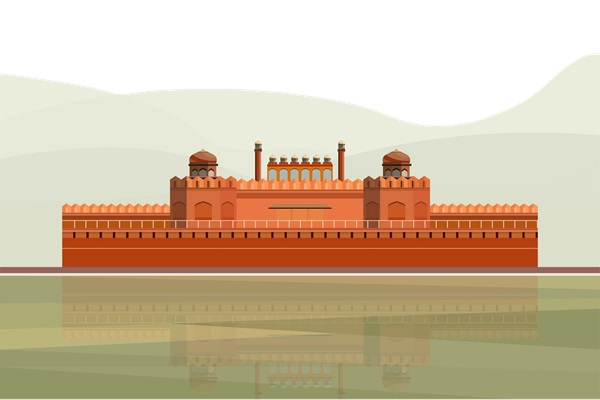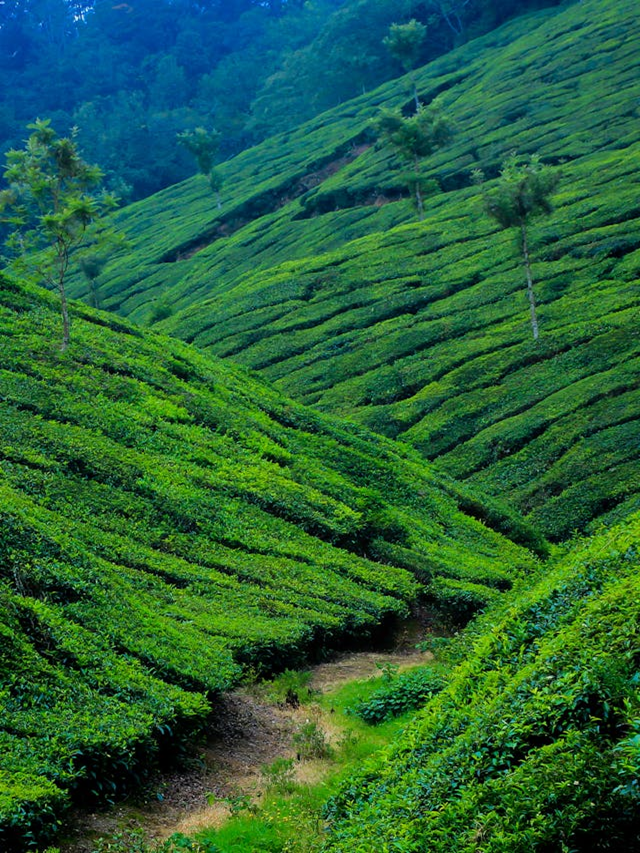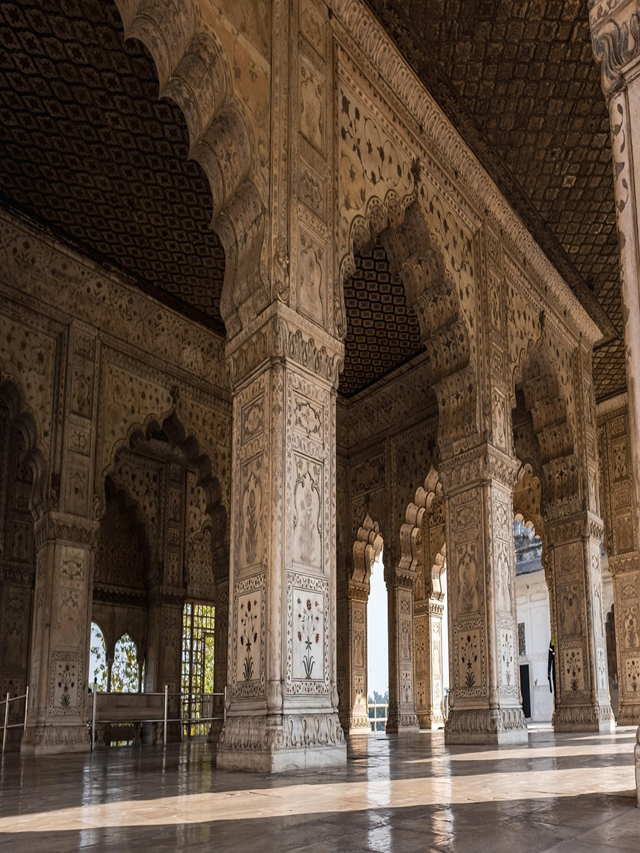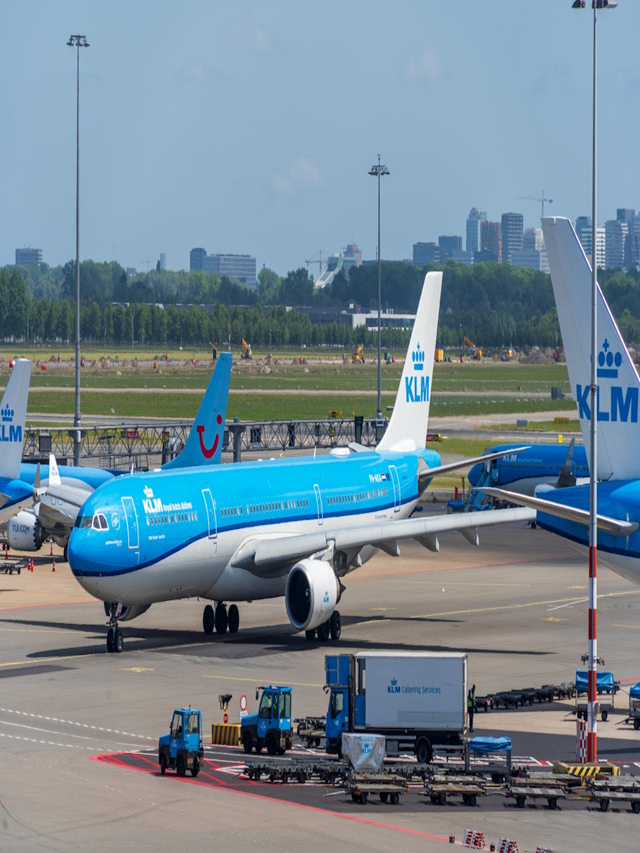Table of Contents
Toggle
Exciting Travel Brochure of Delhi: 7 Must-Visit Spots
Travel Brochure of Delhi: India’s dynamic capital, Delhi, is a city of contrasts. Delhi is a fascinating blend of history, culture and modernity, from its bustling street markets to its tranquil parks, from the bustle of Chandni Chowk to the tranquility of its temples and mausoleums. Whether they are interested in history, cuisine, or different cultures, Delhi may have something to offer everyone. Seven must-see locations in the city that will make your vacation truly memorable are listed in this guide. Come along with me as we explore Delhi’s attractions!
1. The Red Fort (Lal Qila): A Symbol of Mughal Majesty(Travel brochure of Delhi)
Our first destination is the stunning Red Fort, also known as Lal Qila, which is one of India’s most recognizable buildings and a UNESCO World Heritage Site. The fort, which was constructed in the 17th century by Emperor Shah Jahan, was the primary home of Mughal rulers for about 200 years. The fort’s red sandstone walls pay homage to the splendor of the Mughal Empire, while its vast courtyards, gardens, and beautiful gateways transport you to a bygone era.

The magnificent architecture of the fort’s many buildings, including the Mumtaz Mahal, the Diwan-i-Aam (Hall of Public Audience) and the Diwan-i-Khas (Hall of Private Audience), greets you as you pass through the magnificent Delhi Gate or Lahori Gate. You will be amazed to see the beautiful mosaics, inlaid marble and delicate carvings inside.
Insider Tip: Don’t miss the Sound and Light Show in the evening. This captivating show takes you through the history of the Red Fort, bringing its rich past to life through lights and narration.
2. India Gate: A National Monument of Pride

In travel brochure of Delhi Another must-see sight in Delhi is the India Gate, a massive war memorial. It stands 42 meters tall and pays tribute to the Indian soldiers who lost their lives in the First World War and the Third Anglo-Afghan War. Sir Edwin Lutyens created the monument, which is a symbol of pride in the country and can be seen from a great distance.
India Gate, surrounded by lush meadows, is a popular place for locals and tourists to relax, enjoy picnics, and take midnight walks. The monument’s beautiful construction is particularly breathtaking at night when it is bathed in golden light, illuminating the surrounding surroundings in a captivating glow.
Insider Tip: Go to the India Gate in the evening for the most experience. In travel brochure of Delhi in addition to taking in the vibrant local ambiance and the neighboring street food vendors, you will be able to observe the monument’s splendor at sunset.
3. Qutub Minar: The Tower of Triumph(Travel brochure of delhi)

A trip to the Qutub Minar is essential if you’re interested in history, architecture, and engineering wonders. The Qutub Minar is the world’s tallest brick minaret, rising 73 meters. Qutb-ud-din Aibak, the first king of the Delhi Sultanate, built it in the 12th century, and it is recognized as a UNESCO World Heritage Site. The minaret, with its elaborate carvings, inscriptions, and decorative patterns, is a stunning example of Indo-Islamic Afghan architecture.
Explore the travel brochure of Delhi Qutub Complex, which is home to a number of other historic buildings, including the Iron Pillar of Delhi, a magnificent example of ancient engineering that has withstood rust for more than 1,600 years, and the Quwwat-ul-Islam Mosque.
Insider Tip: The Iron Pillar is famous for its resistance to corrosion, despite being made of iron. If you’re into metallurgy or ancient engineering, this will be one of the highlights of your visit.
4. Humayun’s Tomb: The Mughal Garden of Tranquility
It’s like recreating the splendor of the Mughal Empire when you visit Humayun’s tomb. Constructed at the middle of the 16th century, this magnificent monument serves as Emperor Humayun’s final resting place and served as the model for the Taj Mahal. It is a UNESCO World Heritage Site and is considered by many to be among the best examples of Mughal architecture.
The tomb is situated in the centre of a magnificently designed charbagh garden, typical of Mughal gardens and featuring symmetrical pathways, fountains and canals. The actual tomb is a magnificent building built of white marble and red sandstone, with fine arches, inlaid tiles and elaborate sculptures.
Insider Tip: Come early in the morning, when the garden is less crowded, for a more tranquil experience. The tomb and its environs are peaceful, making them ideal for photography and introspection.
5. Lotus Temple: A Symbol of Unity(Travel brochure of Delhi)

The Lotus Temple, sometimes referred to as the Bahá’í House of Worship, is among Delhi’s most distinctive buildings. This beautiful white marble temple, which is open to people of all religions, is shaped like a lotus blossom. It is one of the most visited locations in the city because of its serene atmosphere.
It is suggested that guests contemplate or simply enjoy the tranquil atmosphere. The exquisite architecture of the lotus petals is worth seeing, especially in the evening when they sparkle against the sky, and the temple is surrounded by lush gardens.
Insider Tip: In travel brochure of Delhi, Don’t forget to explore the surrounding Lotus Garden, which offers a beautiful setting for a quiet walk or a moment of introspection.
6. Akshardham Temple: A Spiritual Journey through India’s Culture
The Lotus Temple, also called Akshardham Temple, is a contemporary architectural wonder that provides tourists with an insight into India’s rich spiritual and cultural past. Some of the best specimens of Indian craftsmanship, art, and culture may be found within the temple complex, which was dedicated to Lord Swaminarayan and opened in 2005.
Inside the temple, you’ll find intricate carvings of deities, animals, and scenes from Hindu mythology. The temple complex also features an Yagnapurush Kund, the largest stepwell in the world, and a Yatra (boat ride) that takes you through 10,000 years of Indian history, mythology, and culture.
Insider Tip: Be sure to attend the Musical Fountain Show in the evening. The show, a mix of lights, water, and sound, narrates the timeless teachings of India’s spiritual heritage.
7. Chandni Chowk & Jama Masjid: The Heart of Old Delhi
A visit to Delhi wouldn’t be complete without seeing the vibrancy and charm of Chandni Chowk, one of the busiest and oldest markets in India. You can stroll through its winding streets and enjoy the sights, sounds, and smells of the city’s rich past. There are stores in the market that sell everything from jewelry, clothing, and spices to street food and traditional Indian sweets.
Jama Masjid is the largest mosque. There is a road near the mosque. At the end of the road lies the majestic Jama Masjid, which is always bustling with activity. This mosque is located in Delhi, India. This mosque was built by Emperor Shah Jahan in the 17th century. This mosque is known for its grand domes, tall minarets and an architectural marvel with its intricate calligraphy.
Insider tip: To explore the bustling streets, take a rickshaw ride from Chandni Chowk. Remember to sample some of the regional specialties, such as parathas, jalebis, and chaat.
Delhi Travel Brochure: Typical Fees for Food, Transport, Hotel, and Activities (2025)
| Category | Typical Cost Range (INR) | Notes |
|---|---|---|
| Food | ||
| Street Food/Snacks | ₹50 – ₹200 per person | Chaat, samosas, kebabs, etc. |
| Budget Restaurant | ₹300 – ₹500 per person | Simple vegetarian/non-veg meals |
| Mid-range Restaurant | ₹1,200 – ₹2,000 for two | Multi-cuisine, popular city restaurants |
| Fine Dining | ₹3,000 – ₹5,000+ for two | Luxury hotels, top-tier venues |
| Groceries (monthly) | ₹6,000 – ₹15,000 | For self-catering, depends on consumption |
| Transport | ||
| Delhi Metro | ₹10 – ₹50 per trip | Fare depends on distance (0–2 km: ₹10; >32 km: ₹50)5 |
| Metro Monthly Pass | ₹1,000 – ₹2,000 | Unlimited rides for a month2 |
| Bus Pass | ₹1,000 – ₹2,000 | For frequent bus travelers1 |
| Auto Rickshaw | ₹25+ per km | Minimum fare applies; negotiable |
| Taxi (City) | ₹40 (base fare) + ₹10–₹18 per km | App cabs, local taxis16 |
| Outstation Taxi | ₹9.5 – ₹25 per km | Varies by car type (Wagon-R to Innova/Tempo Traveler)6 |
| Rental Bike/Scooter | ₹349+ per day | For self-drive1 |
| Hotel/Accommodation | ||
| Budget Hotel/Hostel | ₹1,000 – ₹3,000 per night | Basic amenities, central or suburban locations |
| Mid-range Hotel | ₹3,000 – ₹8,000 per night | 3-star, boutique hotels |
| Luxury Hotel | ₹10,000 – ₹25,000+ per night | 5-star, premium properties |
| 1 BHK Apartment (rent) | ₹15,000 – ₹40,000 per month | Central locations more expensive12 |
| 2 BHK Apartment (rent) | ₹20,000 – ₹50,000 per month | Suburbs cheaper, central Delhi costliest2 |
| Activities & Entry Fees | ||
| Major Monuments | ₹30 – ₹600 per person | Red Fort, Qutub Minar, Humayun’s Tomb (Indian/foreigner rates differ) |
| Museum Entry | ₹20 – ₹200 per person | National Museum, Rail Museum, etc. |
| Heritage Walks/Tours | ₹500 – ₹2,000 per person | Guided group or private tours |
| Boat Tours (Yamuna) | To be announced | New tourist circuit, as per 2025 budget7 |
| Entertainment/Shopping | ₹1,500 – ₹4,000 per person/month | Movies, events, markets, personal spending1 |
Conclusion: Delhi Awaits You
Delhi is a city that is a seamless blend of the past and the present, the old and the new. Whether you are admiring the ancient architecture of the Red Fort, strolling through the serene gardens of Humayun’s Tomb, or enjoying the local flavour of Chandni Chowk, Delhi offers a variety of experiences that will leave you spellbound. The city’s rich history, culture, and diversity make it truly special.
Prepare to travel through the heart of India by packing your bags. These seven must-see locations will guarantee that your trip to Delhi will be one to remember.
FAQ:
Yes, there are several cultural norms and customs that visitors should be mindful of when visiting Delhi:
Respect for Religion: India is a diverse country with various religious practices. When visiting temples, mosques, or gurudwaras, dress modestly, covering shoulders and legs. It’s customary to remove shoes before entering religious places.
Greeting Etiquette: The traditional Indian greeting is the “Namaste” (pressing palms together and bowing slightly). It’s a polite and respectful way to greet others.
Public Behavior: Public displays of affection are frowned upon, especially in more conservative areas. Always be mindful of your surroundings and avoid inappropriate behavior.
Respect for Elders: Indians have a strong respect for elders, so it’s customary to greet them first and offer them a seat or priority when possible.
Dress Modestly: While Delhi is a modern city, modest dress is appreciated, especially in religious or conservative areas. Women should consider wearing clothes that cover their shoulders and knees.
Personal Space: Personal space may be different in Delhi compared to Western cultures. People may stand closer to each other in public spaces, but it’s always best to be polite and respectful of others’ comfort.
Tipping: Tipping is common in Delhi. In restaurants, it’s customary to leave a tip of around 10% if service charge is not included. Tipping small amounts to hotel staff, drivers, and guides is also appreciated.
Photography: Always ask for permission before taking photographs, especially in religious or rural areas. Some places may have restrictions on photography.
Lorem ipsum dolor sit amet, consectetur adipiscing elit. Ut elit tellus, luctus nec ullamcorper mattis, pulvinar dapibus leo.




